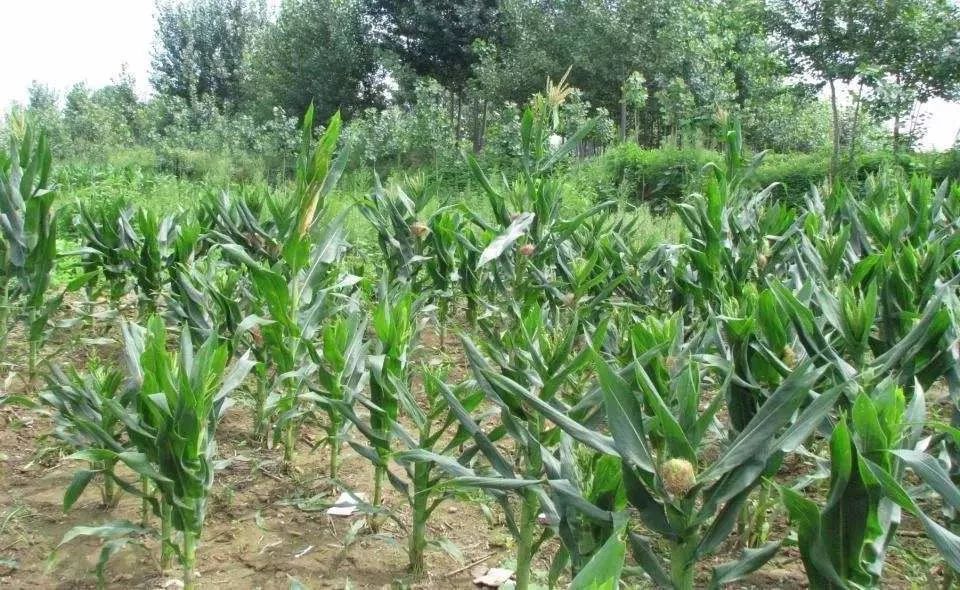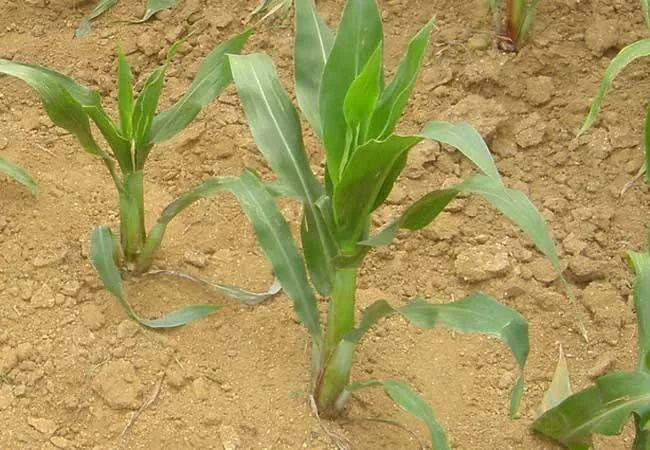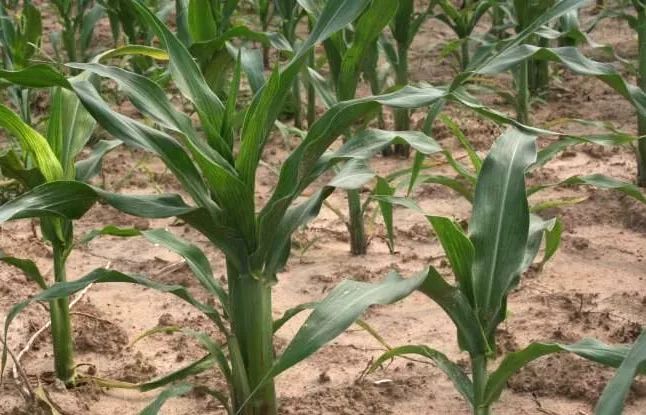Corn rough disease is a corn virus disease caused by corn roughing virus, commonly known as "small dwarf corn", "slope", also known as "corn cancer", which is mainly a long-lasting fly with a virus Sexually transmitted. Maize rough disease isthe main disease of corn seedling stage, which seriously affects the growth of corn and reduces the yield of corn. Generally, it can cause 20% to 30% reduction of production, and the seriousness is as high as 60% or even no. Experts predict that this year's corn shrinkage disease will be strong, are you ready?

1. The growth of the diseased plants is inhibited, and the average height is only a few tens of centimeters. The internodes are thick and swollen and severely dwarfed.
2, the root strain of the diseased plant is small and short, less than half of the healthy plant, easy to pull up from the soil.
3, the diseased plants are long and the leaves are not jointed, the leaves are densely clustered, short and pointed.
4. The leaf veins on the leaves that are clear and smooth will also become intermittent and disorderly. As the disease progresses, the veins on the leaf back and leaf sheath of the plant will also have obvious streak.
5, light disease strain tassel dysplasia, loose powder, short ears, less filaments, less solid. Severely ill tassels cannot be extracted or although they can be extracted but have few branches and no pollen, and the ears are not deformed or the kernels are few.

The incidence of corn rough disease
The occurrence of corn rough disease depends largely on the number of gray planthoppers and the number of infected individuals. The early onset of corn is more serious than that of late-seeded corn. The corn near the head, the canal and the roadside weeds are heavier and close. The incidence of moist and weedy corn in vegetable fields is also heavy, and the degree of disease varies among different varieties.

First, agricultural control:
1. Advocating not to grow spring corn. In recent years, it is in the epidemic year of corn rough disease. If the farming system is reformed, no spring corn is planted, other crops are replanted, and the path of drug source is cut off, which can cause the disease to fade early.
2, the selection of resistant varieties, this is the most cost-effective way to solve the problem of corn rough disease, different corn varieties have certain differences in disease resistance of rough disease.
3. Adjust the sowing date of the corn to avoid the peak period of the poisoning of the gray planthopper. The corn planted in mid-May was catching up with the peak of the poisoning of the gray planthopper after emergence, and the 3-5 leaf stage of the corn was susceptible, so the incidence rate was the highest.
4. Weeds are removed, and weeds in the fields, fields, ditch, etc. are the intermediate hosts for the poisoning of the gray planthoppers. Before the emergence of the corn, weeds in the fields, roadsides and ditch, reduce the intermediate host and prevent The gray planthopper migrated to the corn after the emergence of the corn, thereby reducing the source of the poison.
5. Strong field management. In the corn seedling stage, it is necessary to strengthen the field management, promote the early emergence of seedlings, and time seedlings, and find that the susceptible plants are removed early; at the same time, watering in time to prevent drought and aggravate the occurrence of viral diseases.
It is necessary to grasp four key periods for the prevention and control of pharmaceuticals, and to select low-toxic and high-efficiency pesticides, and to control the rule, in order to receive good results.
1. The corn seeding period uses a seed coating agent containing a systemic insecticide or a corn seed dressing agent to treat the corn seed to achieve the purpose of repelling the gray planthopper, and at the same time, it is better to poison the seed. Prevention and treatment.
2. Wheat grain filling stage In the early stage of wheat grain filling in mid-May, it is the key period for controlling the young nymphs of the first generation of gray planthoppers. At this time, the development trend of the gray planthoppers is grasped in time, and the imidacloprid is used for the centralized drug application in the peak period of the young nymphs. Keke/mu) or chlorpyrifos (50 g/mu) and other systemic pesticides, spray treatment on unclear weeds in wheat fields and roadsides and ditch, pay attention to the amount of water used when spraying, spray evenly Guarantee the insect control effect.
3. During the maturity of wheat, due to the greening of gray planthoppers, at the end of May and early June, after the wheat matures, the first generation of the gray planthoppers migrated from the wheat field to the surrounding spring corn fields, and transferred to the spring maize seedlings. 5. Five leaf corn seedlings are positive for sensitive period.
Therefore, we must grasp the opportunity, in the early stage of the fly ash, in the corn field, 50 grams per ounce of chlorpyrifos or 20-30 grams of imidacloprid and virus A50 grams mixed with water spray, once every 3-5 days, Even spray 3-4 times, it has a good preventive effect on the disease.
4, the initial use of the disease can also be used 4.5% beta-cypermethrin 20 ml, added to the corn special liquid fertilizer mixed spray, can effectively control the incidence. The use of antiviral preparations must highlight the word "early". After the 5-leaf stage of corn, the control and treatment effects are poor.
1. The time for spraying the drug is too late, usually in the 7-8 leaf stage of corn. At this time, the gray planthopper has spread the virus to the corn, and its control effect will naturally be unsatisfactory.
2. Even if the time of prevention and control is relatively timely, it will often neglect the habitat of the gray locusts at the side of the roadside, and prevent the migration to the corn field again after the spraying.
3, gray planthoppers, hummers, jumpers and other poisonous insects like to fly and jump, hidden in the soil during the day, and come out to eat in the evening. In the arrangement of spraying time, it should generally be held at 4 or 5 o'clock in the afternoon or in the evening. Some people ignore the living habits and activities of these pests, and take it for granted that they should spray the medicine during the morning break after the morning spray or work, which can not effectively kill the pests and affect the efficacy of the drug.
Contact: Mr. Ma
Phone: +86-0374-5699688
Tel: +86-0374-5699688
Email: [email protected]
Add: Fine Chemical Industry Park, Jianan District, Xuchang, Henan, China